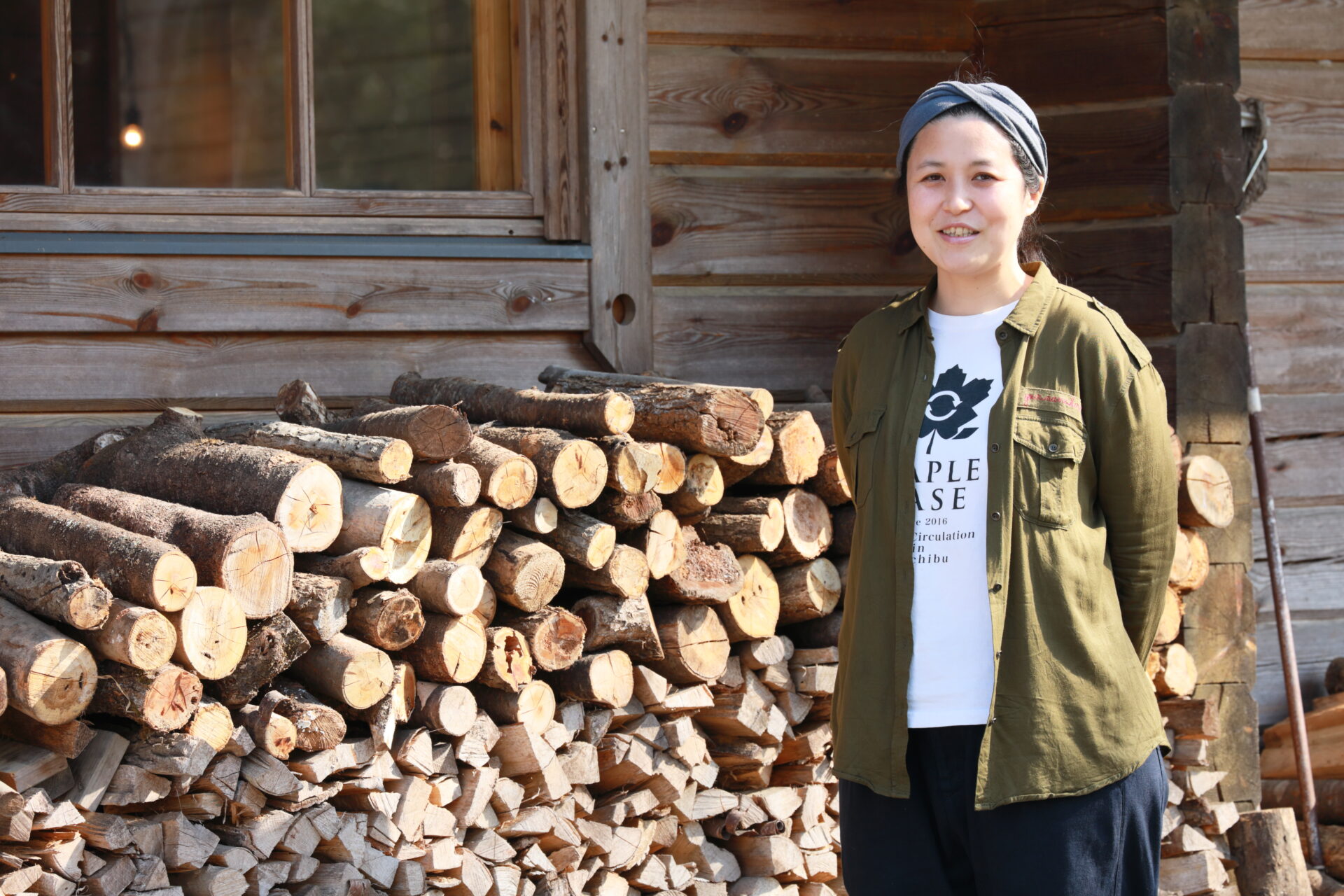Pouring a generous serving of sweet maple syrup on pancakes is a sure way of soothing your soul.
Most people will think of Canada when asked about the country of production for maple syrup. However, maple syrup is also being produced in Japan.
Maple syrup is made by concentrating the sap collected from maple trees, such as the sugar maple tree.
Maple Base, located in Chichibu Muse Park in Saitama Prefecture, uses rare Japanese maple trees to produce and sell maple syrup. They imported a specialized maple syrup machine from Canada for their production.
We spoke to Aiko Ihara, the director of Tap & Sap, which operates Maple Base, about how the production of domestically produced Japanese maple syrup began.
A refreshing yet rich sweetness

Maple Base is located in Chichibu Muse Park, a vast 375 hectare park (about 3 kilometers from north to south) on the Nagaone Hills in the western part of the Chichibu Basin in Saitama Prefecture. Chichibu Muse Park is also known for their spectacular view of the Chichibu Basin.

A log house that was formerly the golf course club house was renovated and turned into a cafe and store in 2016.
The store also researches and produces maple syrup, and they sell numerous maple based products. Besides the obvious maple syrup, they have also developed “Maple Water,” which is the bottled clear sap water of the maple trees before it is boiled down and concentrated. They also sell “Maple Cider,” which is made from maple sap.
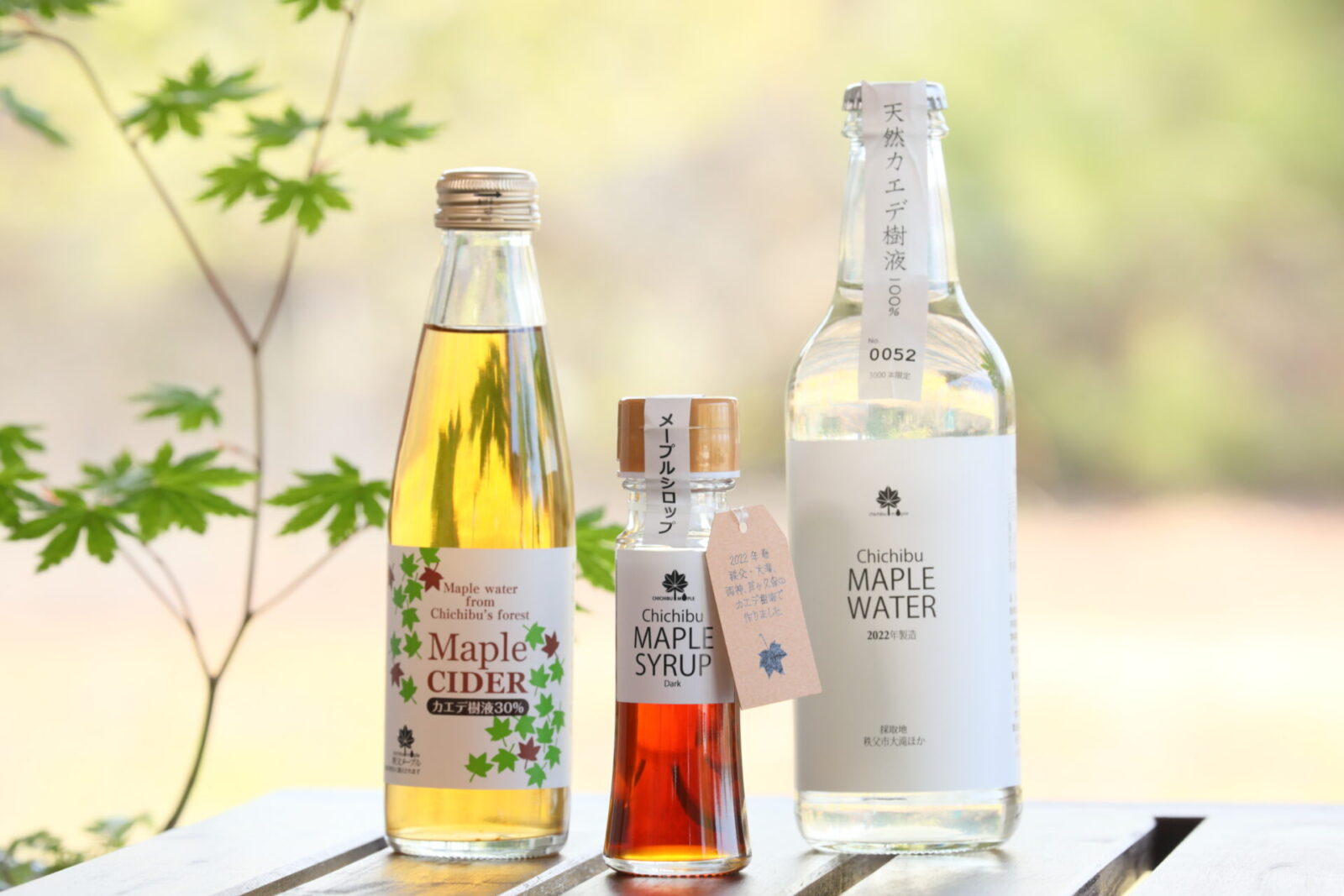
Popular items on their cafe’s menu include pancakes that allow you to compare the flavor of both Canadian and Japanese maple syrup, and a tea that is brewed with maple sap. We visited the store on a weekday afternoon and it was filled with tourists, couples and groups of women who appeared to be local residents.
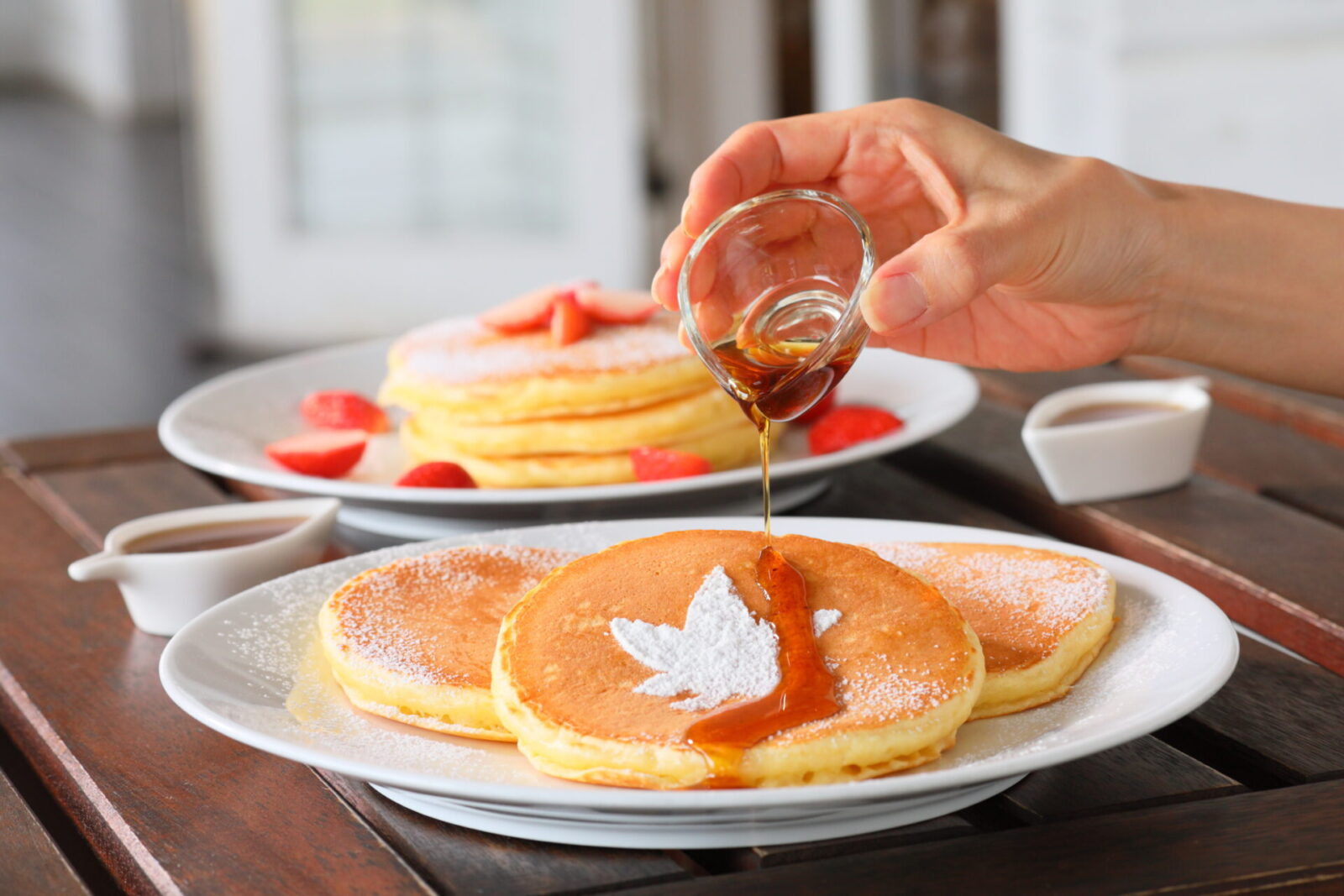
The Chichibu maple syrup somehow tastes more “Japanese” than the Canadian maple syrup. It has a lighter sweetness and notes of richness reminiscent of kokuto, a natural brown sugar made by slowly cooking down sugarcane juice, like sweetness. . It is said that the flavor of maple syrup changes depending on the soil and water of the region the tree is grown. It is somewhat mysterious that the Japanese maple syrup ends up becoming a flavor that is preferred by Japanese people.
Protecting the homeland’s nature
Aiko Ihara, who is the director of Tap & Sap. which operates MAPLE BASE, is originally from Chichibu City. After studying abroad in the UK, she began working for the Scandinavian interior design brand Ikea Japan in Yokohama. During her 8 years working at Ikea, she gained experience in various departments, including logistics, sales, marketing and sales promotion.
While working at Ikea, Ihara learned that the number of abandoned woodlands in Japan was increasing and that these woods were a source of various dangers including increased risks from natural disasters. The woodlands in her hometown in Chichibu were no exception.
“I was curious about this issue so I did some research and found that there was a new initiative in Chichibu City to collect sap from the maple trees that are native to the region. It was garnering attention as a new way to revitalize the forestry industry.
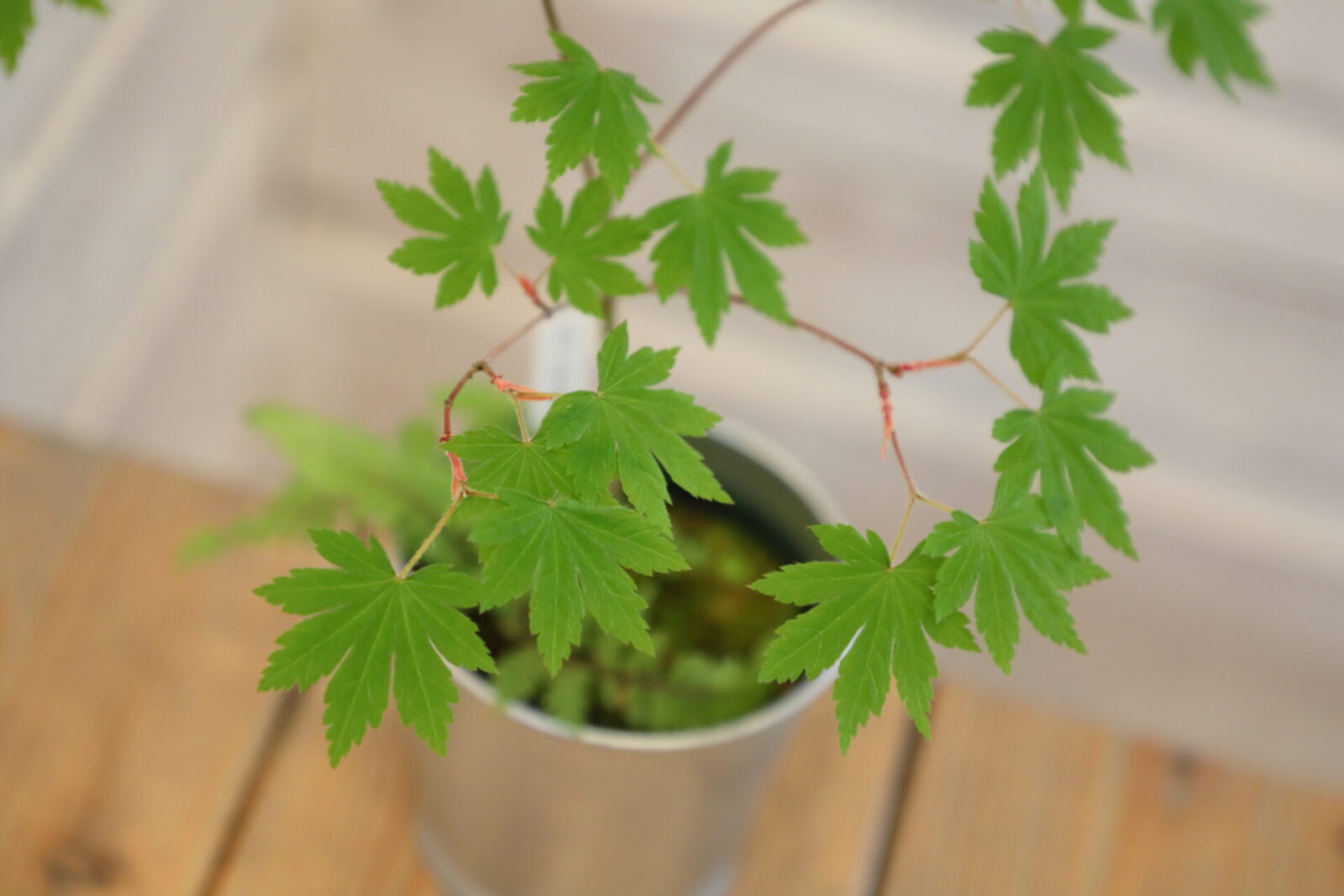
When Ihara learned about this, she gathered more information and participated in an ecological tour to learn about forests that was organized by nonprofit organization “Chichibu Hyakunen no Mori, or “Chichibu One Hundred Year Forest.” As she continued to talk to the Chichibu Souvenir Cooperative, which was in charge of product development, and the Chichibu Sap Production Cooperative, which owned the woodlands, her interest in the initiative grew stronger.
“At the time, I knew nothing about the production of maple syrup. I didn’t even consider its profitability, but there was a strong drive in me that made me quit my job and return to Chichibu. Ikea is a Swedish company that has very high standards of environmental awareness, and the concept of sustainable business was already ingrained in me so I had a strong desire to create a thriving business that would also protect the forests of Chichibu.”
The origins of Japanese maple syrup
Participating in the Chichibu Centennial Forest program was Ihara’s first experience of collecting maple tree sap, and she found the experience to be more challenging than she had imagined. Maple sap is collected around February, in the middle of winter. In Canada, the trees are connected to the processing plant through pipes so most of the sap is collected automatically by machines.
In the Chichibu forest, on the other hand, the process begins by selecting maple trees that meet the criteria for sap collection. Next, they set up a polyethylene tank to collect the sap. After the tanks are full, they carry the heavy tanks down a steep slope by hand. Although they drive their trucks as close to the collection sites as possible, there are still areas that are covered in snow or require quite a distance of walking.
The collection of sap can only be done once a year for a period of one month during the end of winter. In 2022, they collected 9 tons of sap, which is a very small amount compared to Canada. The sap is then boiled down to one-fiftieth of its original volume and concentrated to produce 1,400 bottles of maple syrup. During peak sap-collecting season, Ihara says she sleeps at the Maple Base facilities to work round the clock on production.

Reimagining the forestry industry’s next 20 years
The production of maple syrup is physically demanding and challenging. How does Ihara maintain her passion for this product?
“I did not begin this maple syrup business because I love maple syrup. Maple syrup is just one peice of the puzzle. The issues surrounding forestry in Japan and how it will not be economically viable in the near future have been discussed for a while, but I wanted to find a way to utilize these woods without cutting the trees down.”
This is why it is important for her to work in partnership with the nonprofit origanization Chichibu Hyakunen no Mori (“Chichibu One Hundred Year Forest”) in addition to running the Maple Base business.
“It takes 20 to 30 years from when one plants a maple tree to when it becomes big enough to extract sap from. We take from the forest, but we also give back to build a healthy forest. This is my vision for the future and what I base my plans and goals on.”
The maple syrup made by Ihara is much more expensive than those imported from Canada. However, they have many customers who are drawn to the carefully produced and delicious flavor of their products and who share their vision to nurture a healthy forest for the future.
Maple syrup making as conservation as well as business
Canada has a history of planting many maple trees as part of a national policy initiative. The reason why its production is sustainable as a national industry is because they have a cycle of growing new trees when an old tree dies.
On the other hand, Japan planted a large number of cedar trees as a national policy after cutting a large number of trees for lumber during postwar development. They planted cedar trees because they grow quickly and are easy to make into lumber for building. At the time, forest landowners were told that their trees will someday be enough to make a lifetime of income.
However, when the lumber market opened to international sources, lumber from overseas was cheaper, higher in lot volume and had a steadier supply, so demand for imported lumber grew. Even today, apart from a few rare brand lumber, the popularity of Japanese lumber continues to decline.
In the forestry industry where timber is collected, the cycle usually means that, once the trees have grown to a certain size, they are cut down and new trees are planted. However, because domestic timber production is no longer profitable, new trees are rarely planted, and the cultivation of new forests is becoming increasingly uncommon.
“A forest needs a healthy cycle in order to maintain biodiversity, prevent landslides, and control the water flow of mountain creeks and rivers. A healthy forest has many functions. In the forests that are deteriorating under the current forestry industry, I want to trim out cedar trees and plant maple trees, which also hold a lot more water. I hope to bring back forests with natural cycles by having forests where cedar trees and maple trees coexist.”
“Through the production of maple syrup, I hope to establish a new style of business for the forestry industry that goes beyond logging, and to find a balance between environmental protection and business.”
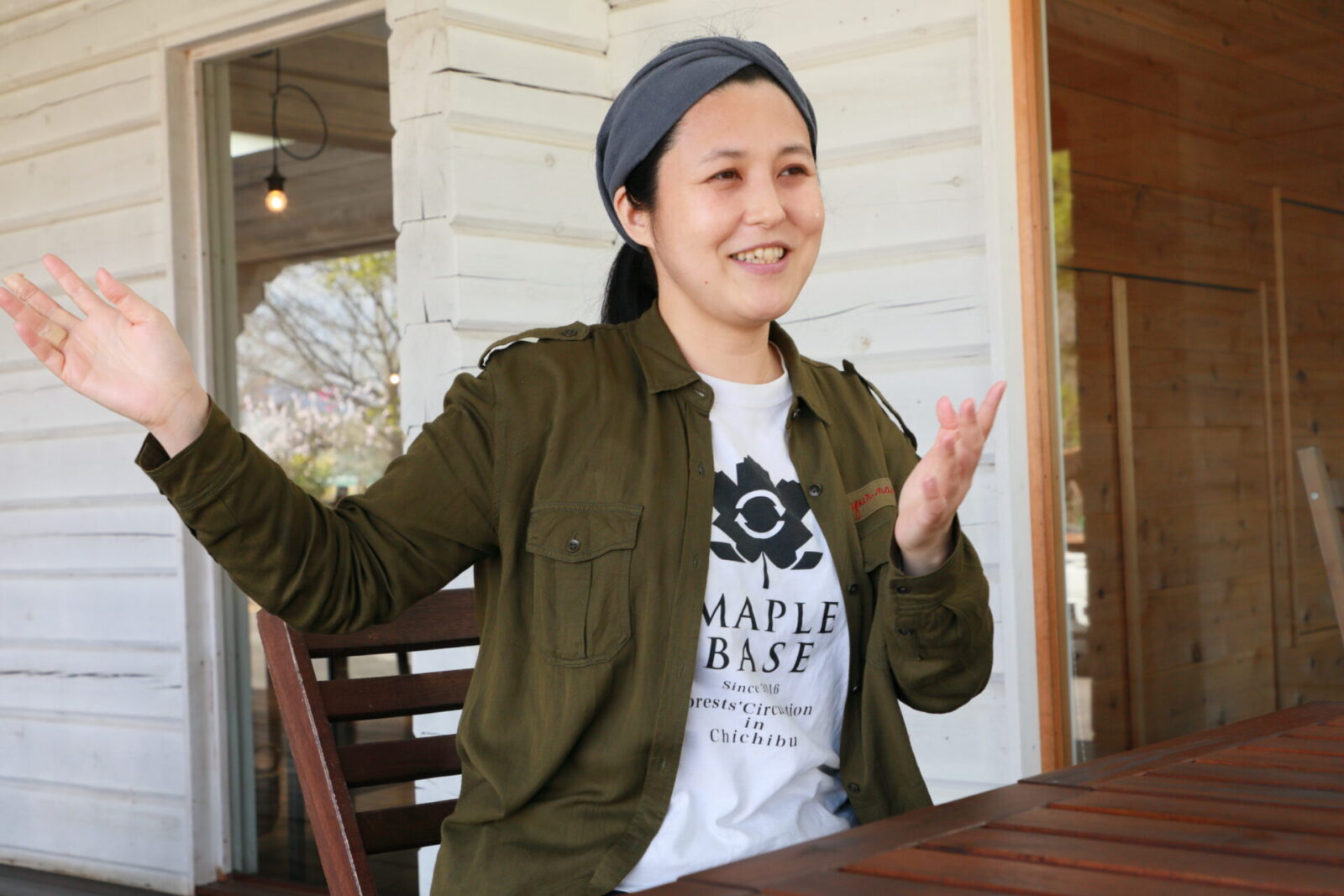
Raising a forest and turning it into a viable business is no easy task. However, Ihara says that during her time at Ikea, she learned the important balance of maintaining a business while addressing social responsibility.
“Recently, the concept of SDGs (Sustainable Development Goals) has become more widespread in Japan, and we have been able to receive more government and corporate funding. I also think that if I can utilize the skills in branding and marketing that I gained through my experience at Ikea, I can promote our product to a wider audience.”

Recently, they launched a new product called “Chichibu Japanese Maple Pudding” in collaboration with Meito (Kyodo Milk Industry Co., Ltd.). They used the maple syrup produced in Chichibu in the pudding and Meito also became a strong partner in their efforts to plant new trees.
Japanese maple tea connects nature and daily life

Ihara has also obtained a travel business license in order to expand her activities in the forests of Chichibu.
“I hope to coordinate ecotourism tours so we can introduce our business and activities to more people and garner more support. Rather than tourists, the tours will be aimed toward schools and corporations. We hope that we can provide experiences where they visit the areas we collect maple sap and the woodlands we re-forested. We also hope that these tours will provide opportunities to plant trees so people can be involved in a multi-faceted and long term manner.”
“When observing the woods of Chichibu, you get a very clear sense of the changing seasons.” For her, the Chichibu forests give her very special and precious moments,” says Ihara.
She says she enjoys listening to music while making tea with maple water, or taking a moment of rest with a cup of warm milk with maple syrup. These are the moments in which she feels most relaxed and in touch with nature.
“Although it is a luxury, if you cook rice using Maple Water, it comes out shiny and chewy and delicious. It’s really special.”
Ihara has taken one step towards the preservation of forests that will help the forestry industry of Japan for decades ahead. The creation of delicious maple syrup is a huge challenge to connect the daily lives of people to the forests once again.
Photo:Katsumi Sakaguchi
Translation: Sophia Swanson
Made her debut as a beauty writer for publisher Shogakukan’s “美的” (Biteki) while working as an actress in Lumine the Yoshimoto. After giving birth to her first son, she became a certified baby massage instructor. Currently appearing on TV shopping channel QVC as the PR representative for the cosmetics company Almado. Holder of HSK level 5 in Chinese language certification.
Yuko Souma is the director of Delightful LLC and was born in 1976 in Chichibu City, Saitama Prefecture. Souma began their career working as an assistant to editor and writers at a production company while studying at Waseda University’s Faculty of Letters, Arts and Sciences. In 2004, Souma was an editor and member of the launch team for the free magazine R25 at Recruit Co., Ltd. They left that role in 2010 and has since produced and edited for magazines, books, online publications, booklets for corporations and municipal governments, and owned media.
